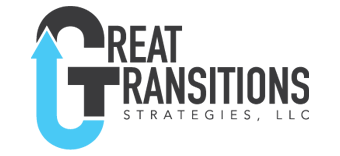As one of the committee members of the promotion board, I was amazed at the differences in the quality of the packages. Assigned 15 candidates it was easy to eliminate 5 pretty quickly.
The candidates used only a fraction of the space allotted to describe their achievements. The description of the achievements did not rise to the level of grade they were competing for. In fact, the package focused on how well they fit into to the company culture rather than measurable impact.
The first thought to come to mind was; Did the individual submitting the package understand the requirements for promotion to this grade?
What about you? Where are you in the promotion cycle? Are you competitive and do you understand the requirements for promotion?
Maybe it is time for a promotion checkup to assess your current trajectory. Here are some considerations.
First. Do you have a trajectory? Most professionals I work with focus on horizons from 1-2 years. Pick a horizon that makes sense and create a vision on what you want it to look like.
Second. Write down what is required to be promoted. My clients have found this to be enlightening. For some, it required a pivot to get on the path to promotion. Typical pivots; a lateral move for more experience, seeking additional education, training, or search for a new opportunity. The determination was that maintaining the status quo was not the path to promotion.
Action Steps
Set your vision. Pick when you will be promoted.
Analyze the requirements
This step takes some work. Here are some methods to determine and analyze the requirements. Take the perspective of a committee member on your promotion board and develop the following:
- The measurable performance required to be promoted
- The leadership skills required to be promoted
- The risk associated with promoting you
- The business case for your promotion
The Measurable Performance Required to be Promoted
Write down the specific requirements to be promoted. After listing some of the obvious criteria, this becomes a revealing exercise. Many professionals do not have an accurate picture of what it takes to get promoted. Go find it. Seek out the requirements by asking key people.
- Ask what your organization is looking for in its leaders
- Understand the strategic direction
- Listen to the leadership of your organization
You may be amazed at what you learn.
The Leadership Skills Required to be Promoted
Yes, there is some overlap with the previous area however, this is a critical item by itself. Is your organization looking to promote innovators willing to take risks or leaders that play it safe and can maintain the current pace?
How do you fit in with your next level peers? Are you seen as currently operating at that level with rapport or will you be seen as a newcomer that needs to prove you belong? Document leadership you demonstrated in the past.
What does this investigation tell you? Are you a fit and have you demonstrated the required skills?
The Risk Associated with Promoting You
This is a difficult self-assessment. What are the risks of promoting you? If this is a stretch position, risk is a concern. How well equipped are you for the challenges at the next level? This will be a specific topic covered by the team talking about your promotion.
Make the Business Case for Your Promotion
This is the bottom line. Take the three steps above, analyze the data, and measure yourself against the criteria.
Does the data support a positive return on the organization investing in you? This is the crux of the discussion that will take place on whether to promote you or not. A positive return on investment and you will be promoted.
If you have diligently executed this exercise, you know what it takes to get promoted. You just developed a clear path forward.




